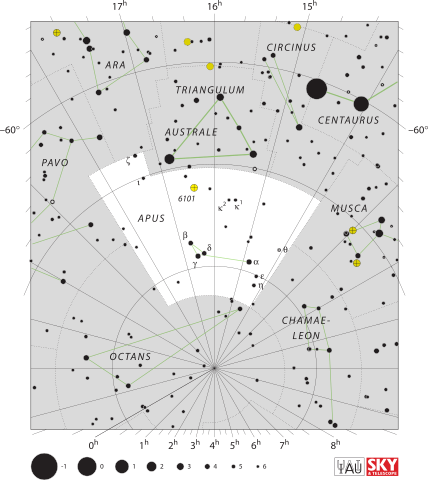- Star Tales - Apus (ianridpath.com)
One of the dozen new constellations introduced at the end of the 16th century from observations of the southern sky by the Dutch navigators Pieter Dirkszoon Keyser and Frederick de Houtman. Apus represents a fabulous bird of paradise, as found in New Guinea, but it is a disappointing tribute to such an exotic creature, its brightest stars being of only 4th magnitude.
- Apus (Wikipedia)
Apus is a small constellation in the southern sky. It represents a bird-of-paradise, and its name means “without feet” in Greek because the bird-of-paradise was once wrongly believed to lack feet. First depicted on a celestial globe by Petrus Plancius in 1598, it was charted on a star atlas by Johann Bayer in his 1603 Uranometria. The French explorer and astronomer Nicolas Louis de Lacaille charted and gave the brighter stars their Bayer designations in 1756.
